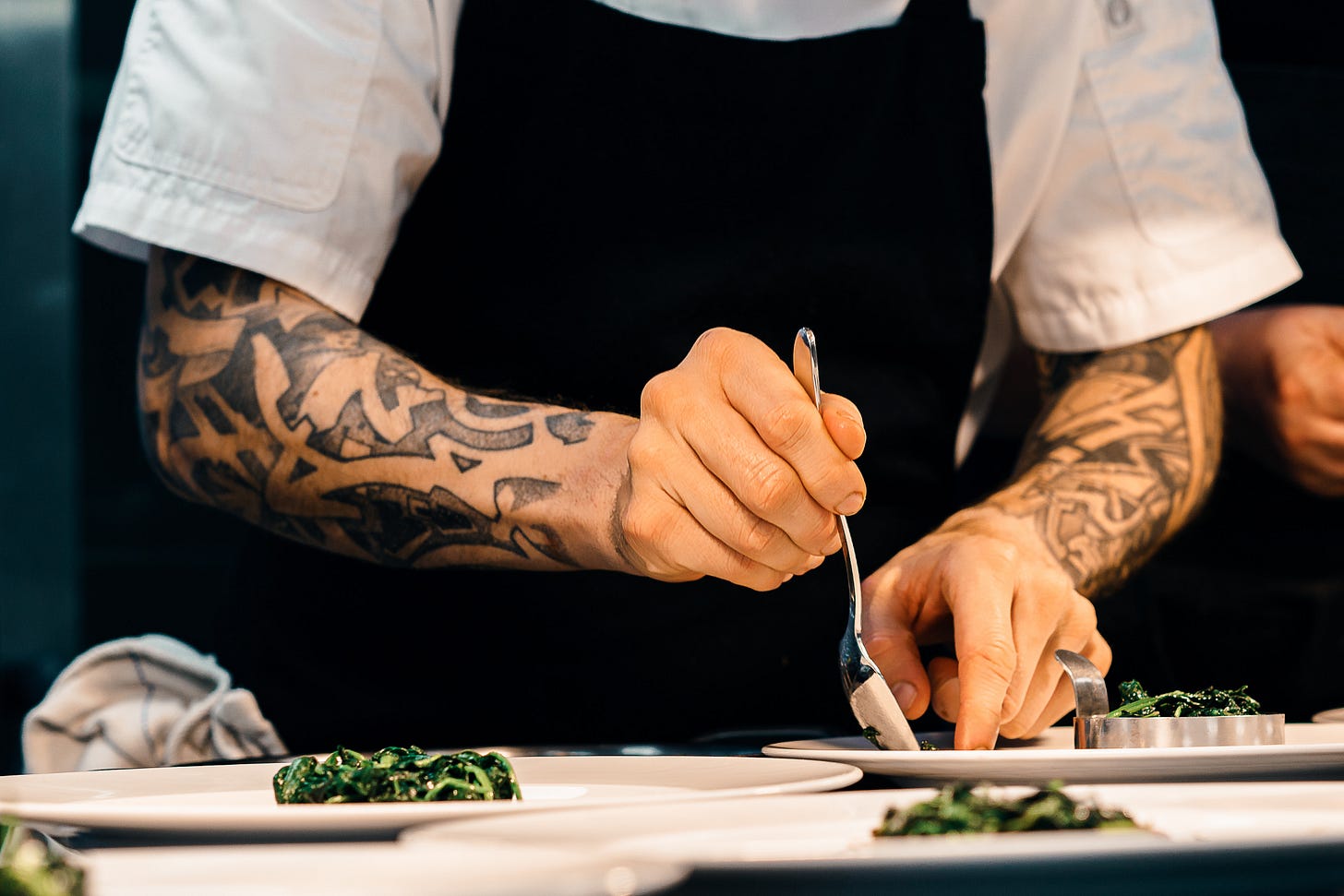Is writing an art or a craft?
Art can be anything, from a child’s finger painting to a saxophone solo to a poem or a musical symphony.

Anthony Bourdain was culinary literature’s Hunter S. Thompson, a sort-of gonzo savant who wrote about food and restaurant culture with a swagger, passion and grit that writers in any genre struggle to match.
His love of these subjects drips from the pages of Kitchen Confidential, his 2000 memoir, like pine tree honey, and his contempt for prima donna cooks is never subtle or hidden from view.
“Cooking is a craft, I like to think,” he writes, “and a good cook is a craftsman — not an artist.
“There’s nothing wrong with that: the great cathedrals of Europe were built by craftsmen …. Practising your craft in expert fashion is noble, honorable and satisfying.”
Bourdain makes these comments in a chapter about line cooks, whom head chefs at high-end restaurants rely upon to cook the same way, day in and day out.
This kind of consistency requires discipline, focus and a complete lack of ego.
There’s no room here for high-minded culinary school grads who want to remake the head chef’s menu according to an avant-garde new philosophy of food.
“When I hear ‘artist,’ I think of someone who doesn’t think it necessary to show up on time,” Bourdain writes.
“Personally, I’d rather eat food that tastes good and is an honest reflection of its ingredients than a three-foot-tall caprice constructed from lemongrass, lawn trimmings, coconuts and red curry. You could lose an eye trying to eat that.”
He’s exaggerating for effect, of course. But there is a lesson in here for writers.
Our work is both art and craft, but it leans toward the latter.
Art can be anything, from a child’s finger painting to a saxophone solo to a poem or a musical symphony.
Although most artists do practice hard and refine their work, everything they produce is technically art; it exists from the time it is conceived until the time it is lost and forgotten.
At my grad school, someone in the visual arts program made an exhibit out of various types of mouldy hamburgers.
So believe me when I tell you: art doesn’t have to be good or useful in order to be art; it simply needs to exist.
A craft is something you repeat over and over again with the hope you’ll eventually become good. And it does matter if you’re good or not.
Becoming good is the point, along with being useful in the real world.
As writers, many of us begin with an inkling of an idea that we’d like to do this for a living. Our teachers tell us we’re good at putting words together, and sometimes our family and friends do, too.
Then we try to get published, and discover we’re not good enough yet. We go back to our computers and bang away until our work is fit to see the light of day.
We write for small publications, then larger ones, and eventually maybe we’ll even write a few books. This, at least, is how it’s been for me.
The process of becoming a good writer is iterative, frustrating and slow.
Our best writers weren’t born that way; they worked hard at it for a long time. They scratched and grabbed and clawed their way to success.
If you feel discouraged by this, please don’t be. Since writing is a learned skill, anyone can do it. We get better as we go.
Don’t worry if you didn’t do well in school, if you can’t spell and your grammar is no good. I’ve worked with lots of professional writers who are in the same boat.
Focus on what you’re trying to say — what you need to say — and not the way you’re saying it. Substance matters more than style.
As Lewis Carroll, author of Alice in Wonderland, said: “Take care of the sense and the sounds will take care of themselves.”
It’s worth noting that Bourdain was not a remarkably good stylist, either. His writing is glaringly derivative of Hunter Thompson’s, and his use of language is not elegant or surgical.
As a writer, he was a craftsman, not an artist. He cared deeply about the work, and he cared deeply about the subjects he wrote about.
Start with a similar passion — or even a small fraction of it — and you’ll be fine.


